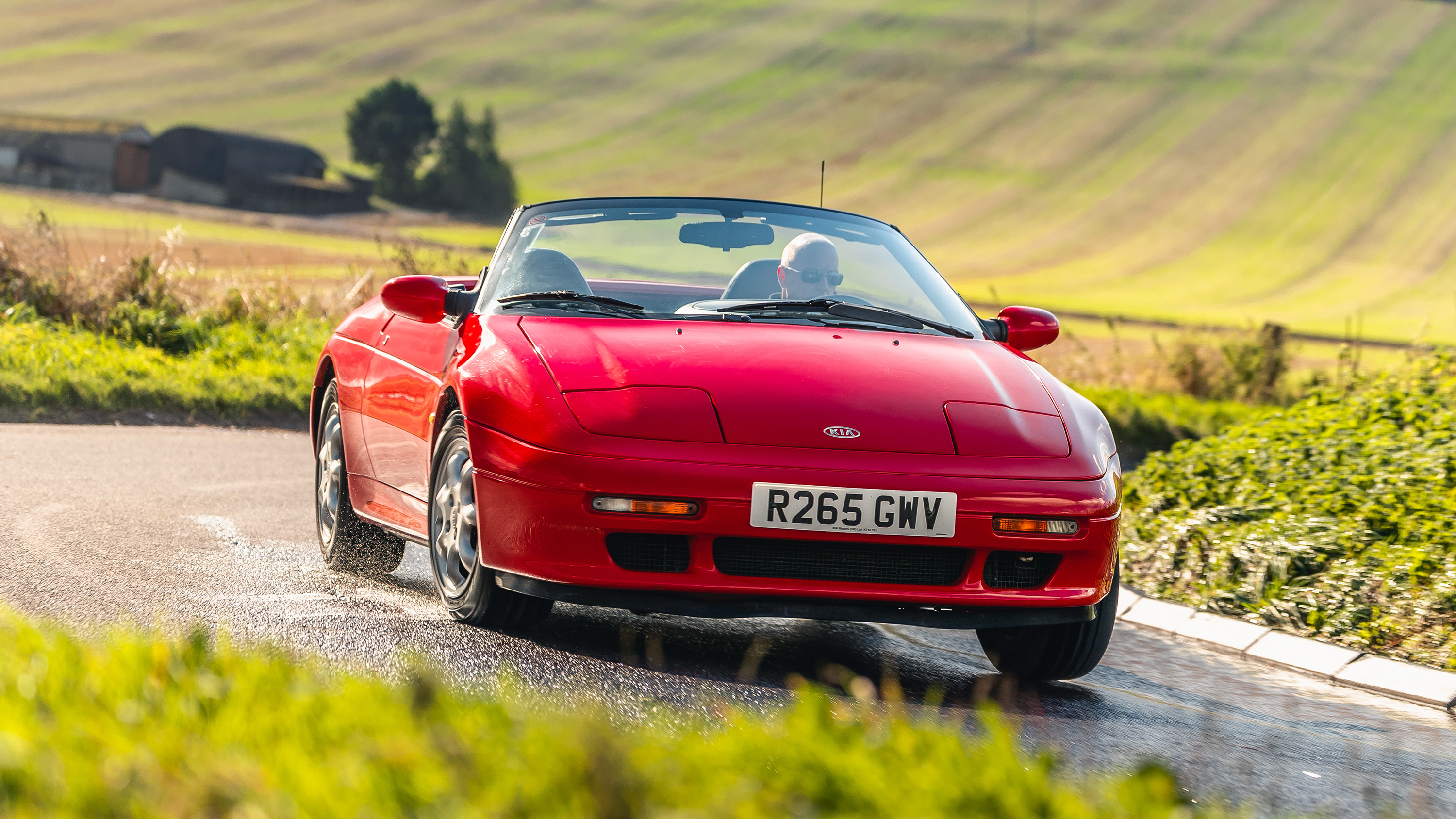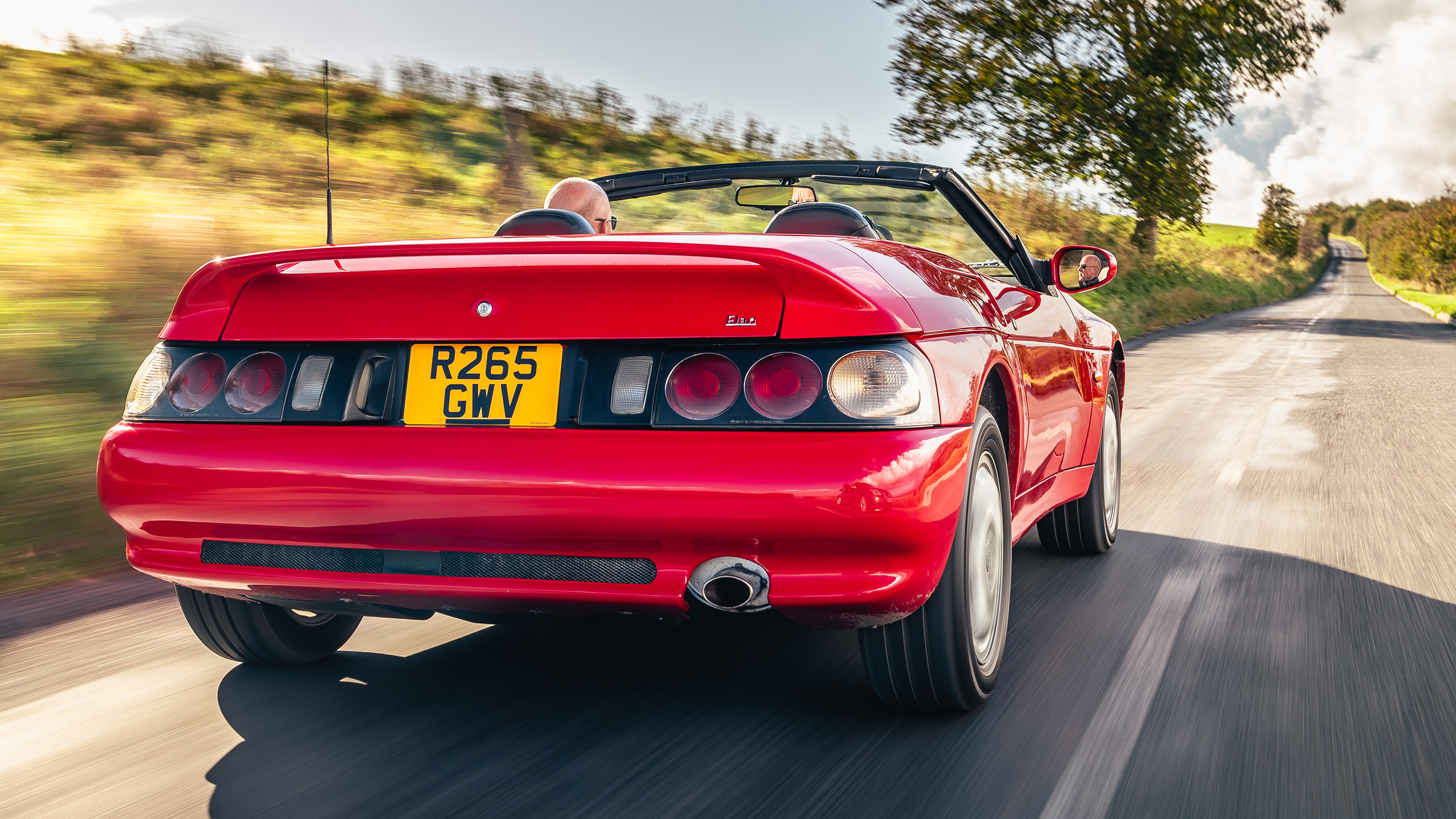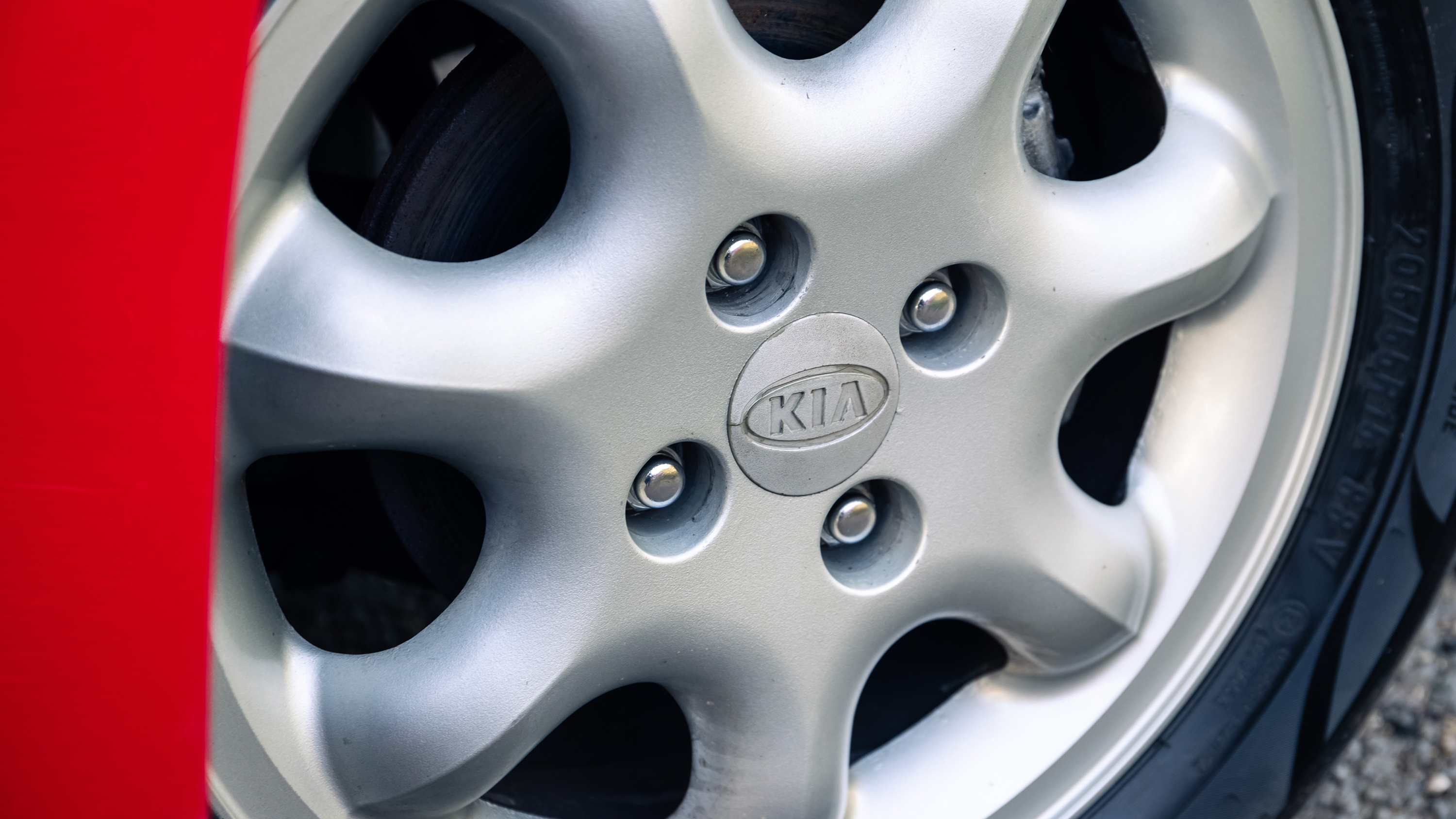
Kia Elan review
Good stuff
An affordable slice of exotic, intriguing sports car
Bad stuff
Not scalpel-sharp to drive. The interior has aged a tad
Overview
What is it?
It’s not what you might first think. This is no early Nineties Lotus, all het up and ready to attack a greasy British back road. Nope. It’s a late Nineties Kia. Albeit one seemingly attempting the same goal.
You’re looking at the lesser-spotted Kia Elan. And yes, it’s a rebadged Lotus in much the same way a Mazda 2 is now a rebadged Toyota Yaris.
But why the heck did they do that?
We now know Kia as a forward thinking, aesthetically cocksure brand that makes a V6 muscle car (the Stinger GT) and an exceedingly bold electric crossover (the gob-smacking EV6), with a handful of reasonably good looking hatchbacks and SUVs gaggled around basking in the glow of their halo effect. These days we recommend Kias without sarcasm or a wry smile etched on our face.
But rewind 20 or more years and the truth was much different. Kias were cheap and nowt else, to be honest, and so the range needed something to make people think ‘oh, those people actually like making cars’. That ‘something’ involved buying the now defunct tooling Lotus used to make the M100-generation Elan; replaced in 1995 by the wondrous Elise, its kit and instruction manual headed east where it was pumped out by Kia between 1996 and 1999.
How come I’ve never seen one?
It was sold only in South Korea and Japan. And around 1,000 were made, paling in comparison to the Lotus Elan’s 3,800 sales. And interestingly it’s actually not solely a badge swapping exercise.
Lotus’s then owners, General Motors, had refused to share parts with Kia, while the Korean authorities demanded the car have proper home-grown input. So in came the rather limp sounding twin-cam 1.8-litre in place of a turbocharged 1.6-litre, the Lotus’s Alpine A610-sourced rear lamps went and there were various changes in the cabin.
But it is, naturally, a featherweight. It was first etched by Lotus after all. Thus its 1,070 kilos hardly need abundant power to lend them some athleticism. Although it makes do with a naturally aspirated four-cylinder possessing a mere 149bhp and 137lb ft, making it good for a 0-62mph time of 7.4secs and a 137mph top speed, it exhibits the right attitude.
What's the verdict?
Feeling a little woozy seeing an utterly recognisable Lotus not being, y'know, a Lotus? This may be the most bonkers bit of badge-engineering in motoring history. But basing your firm's first enthusiast car on a deft-handling sports car, whose production has only ceased because the Elise has arrived to usurp it, is no ill move.
The Kia Elan may seem extraordinarily odd in concept, but the reality is a neat-to-drive, arresting-to-look-at roadster that'll always be a talking point, even 25 yeas after its conception. Good luck finding one...
Photography: Jonny Fleetwood
Featured

Trending this week
- Car Review
BMW iX3






